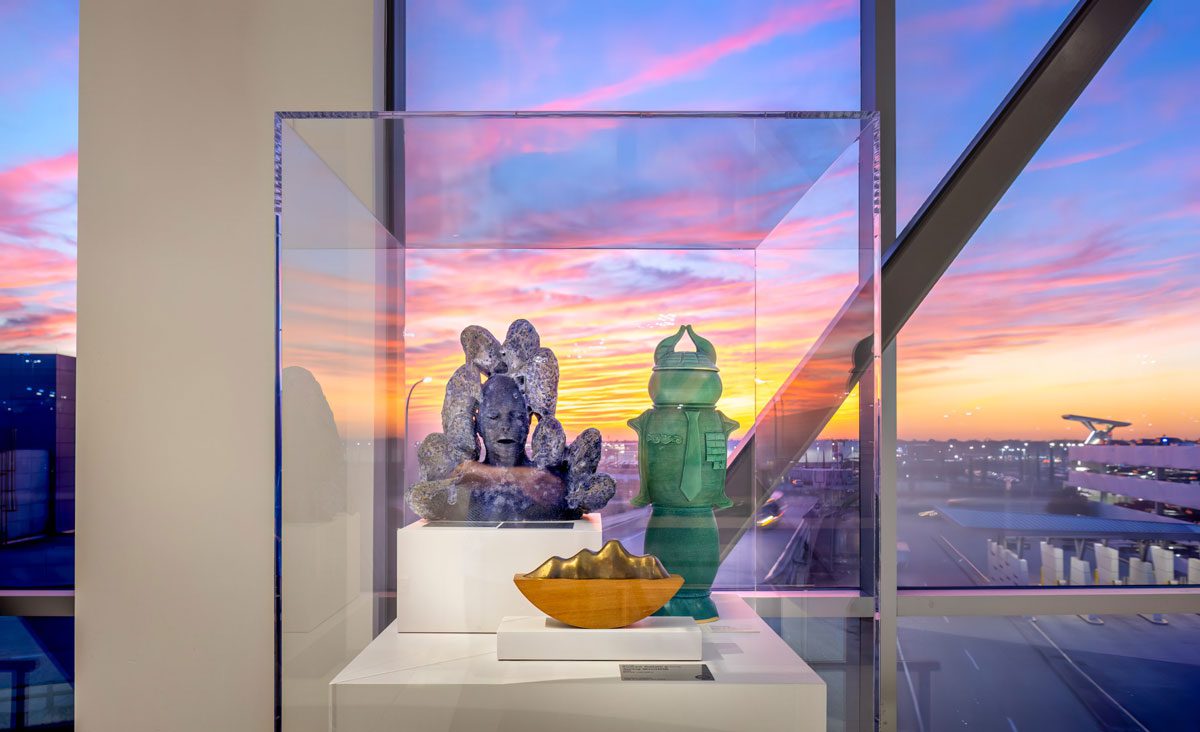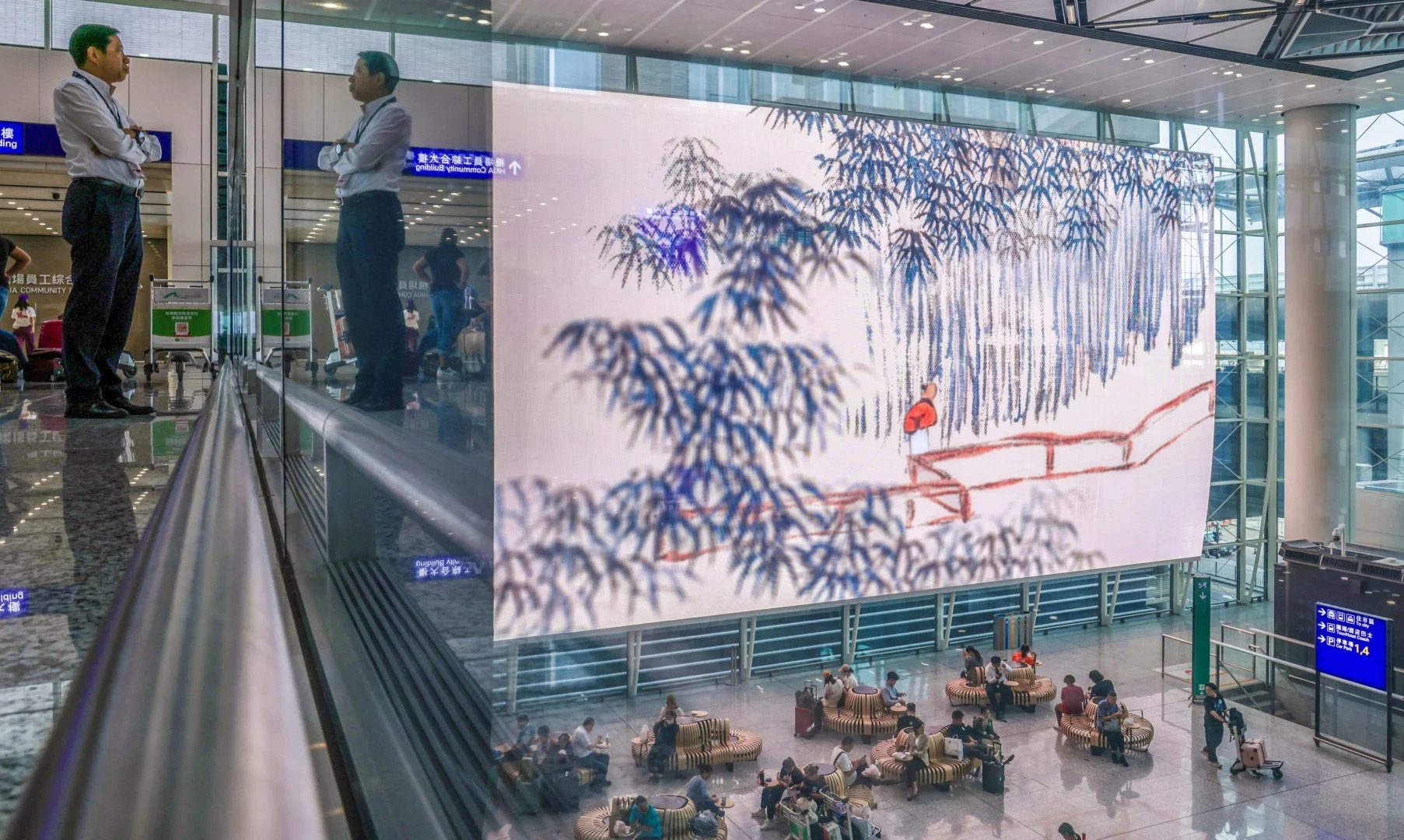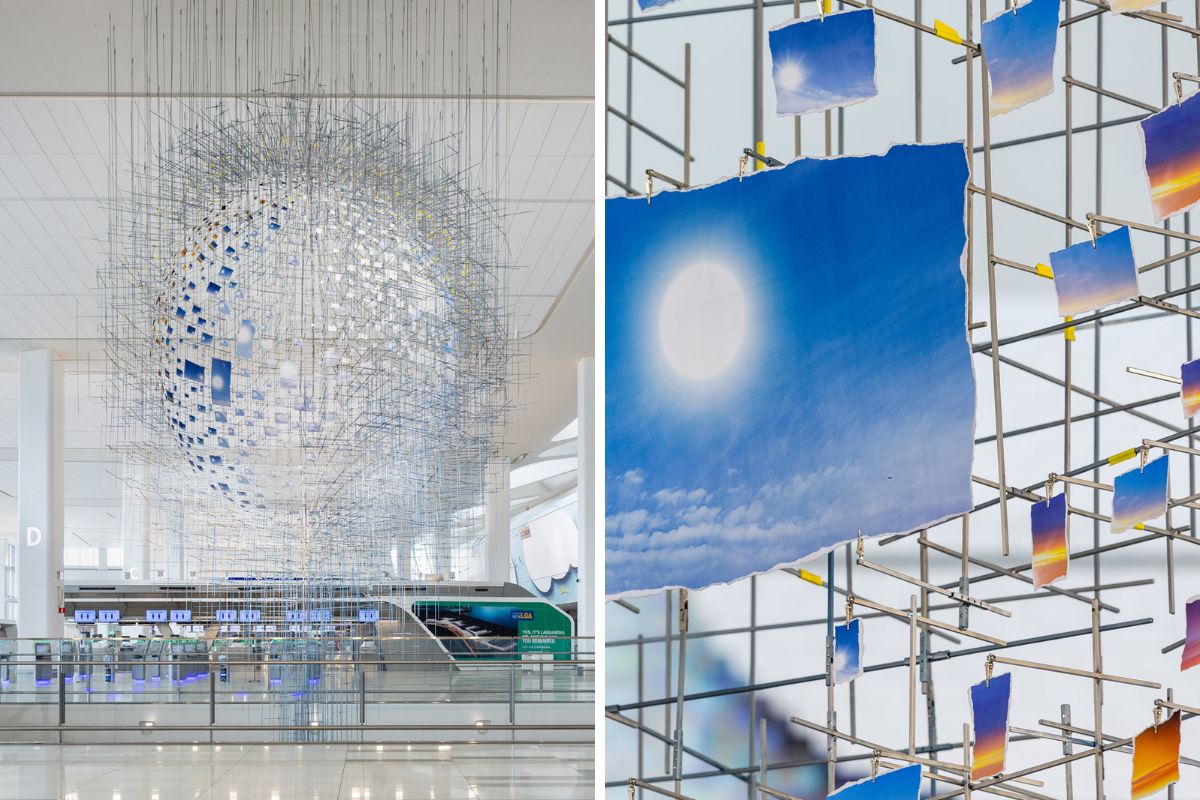In the ever-evolving landscape of air travel, airports are no longer just functional spaces for transit. They are becoming cultural destinations in their own right, with art playing a pivotal role in enhancing the passenger experience and showcasing local identity.
Airport art integration has evolved from a sporadic afterthought to a crucial strategic component of airport design and operations. Historically, art installations in airports were often disconnected and lacked coherence. Now, airports value a curated art collection that enhances the passenger experience, beautifies the environment, and reflects the region’s cultural identity.
Art in airports serves more than just an aesthetic purpose; it significantly impacts the passenger journey by creating a calming and engaging environment. Research shows that well-designed art installations can reduce stress, promote relaxation, and enhance the overall travel experience.
This positive impact on passenger well-being can also translate into economic benefits for airports. Satisfied travellers are more likely to spend time and money in terminal shops and restaurants when spaces are more engaging with art, have a higher visual appeal that captures people’s attention with surprising or intriguing elements, and offer an overall enhanced experience. According to research conducted by Airports Council International (ACI), a mere one percent increase in global passenger satisfaction can spur a 1.5 percent increase in revenues.

Crow Aura by Damon Thomas – William P. Hobby Airport (HOU) in Houston, TX
Moreover, art installations can reflect the local culture and history, providing travelers with a glimpse into the region’s identity. This cultural representation not only enriches the traveler’s experience but also fosters a deeper connection with the destination.
Successful art integration in airports requires a thoughtful and strategic approach. Here are some best practices and recommendations for airports looking to enhance their spaces with art:

To capture the attention of a diverse audience, airports are increasingly featuring a wide range of art forms. This includes traditional art, immersive installations, digital art, and functional art pieces. Each form offers unique ways to engage travelers and enrich their experience:

Several airports around the world have successfully integrated art into their spaces, setting benchmarks for others to follow:

20th anniversary of Incheon International Airport and the 20th anniversary of Kiaf, the exhibition named “We Connect Art & Future, Kiaf and Incheon Airport”
While it is important to highlight local talent, airports should also include global perspectives in their art collections. This balance ensures that the art reflects both the local culture and a broader global context, offering a well-rounded experience for international travelers.
To achieve this, airports can collaborate with local art institutions and specialists to curate museum-quality collections that showcase regional and international works. This approach not only enriches the art collection but also positions the airport as a cultural ambassador.
For example, LaGuardia Airport’s Terminal B collaborated with the Public Art Fund to bring diverse international pieces, while Terminal C partnered with the Queens Museum to highlight local BIPOC artists. These efforts resulted in a rich and culturally significant collection.

Sarah Sze – Shorter than the Day – Commissioned by LaGuardia Gateway Partners in partnership with Public Art Fund for LaGuardia’s Airport’s Terminal B. Photo- Nicholas Knight
The placement of art within an airport can significantly impact the traveler experience. Artworks should be strategically located to enhance specific moments in the traveler’s journey. For example:

Lia Halloran – Your Body is a Space that Sees – LAX Airport
The integration of art in airports is more than just a trend; it is a strategic approach that enhances the passenger experience and contributes to the airport’s cultural and economic value. By adopting best practices and showcasing diverse art forms, airports can transform into vibrant cultural spaces that leave a lasting impression on travelers.
Firms like MASSIVart, with their expertise in creative placemaking and public art, are uniquely positioned to guide airports in developing comprehensive art strategies that resonate with both local and international audiences. By weaving a narrative through art, airports can create more pleasant and memorable journeys for travelers, ultimately boosting satisfaction and revenue.
| Cookie | Duration | Description |
|---|---|---|
| cookielawinfo-checkbox-analytics | 11 months | This cookie is set by GDPR Cookie Consent plugin. The cookie is used to store the user consent for the cookies in the category "Analytics". |
| cookielawinfo-checkbox-functional | 11 months | The cookie is set by GDPR cookie consent to record the user consent for the cookies in the category "Functional". |
| cookielawinfo-checkbox-necessary | 11 months | This cookie is set by GDPR Cookie Consent plugin. The cookies is used to store the user consent for the cookies in the category "Necessary". |
| cookielawinfo-checkbox-others | 11 months | This cookie is set by GDPR Cookie Consent plugin. The cookie is used to store the user consent for the cookies in the category "Other. |
| cookielawinfo-checkbox-performance | 11 months | This cookie is set by GDPR Cookie Consent plugin. The cookie is used to store the user consent for the cookies in the category "Performance". |
| viewed_cookie_policy | 11 months | The cookie is set by the GDPR Cookie Consent plugin and is used to store whether or not user has consented to the use of cookies. It does not store any personal data. |